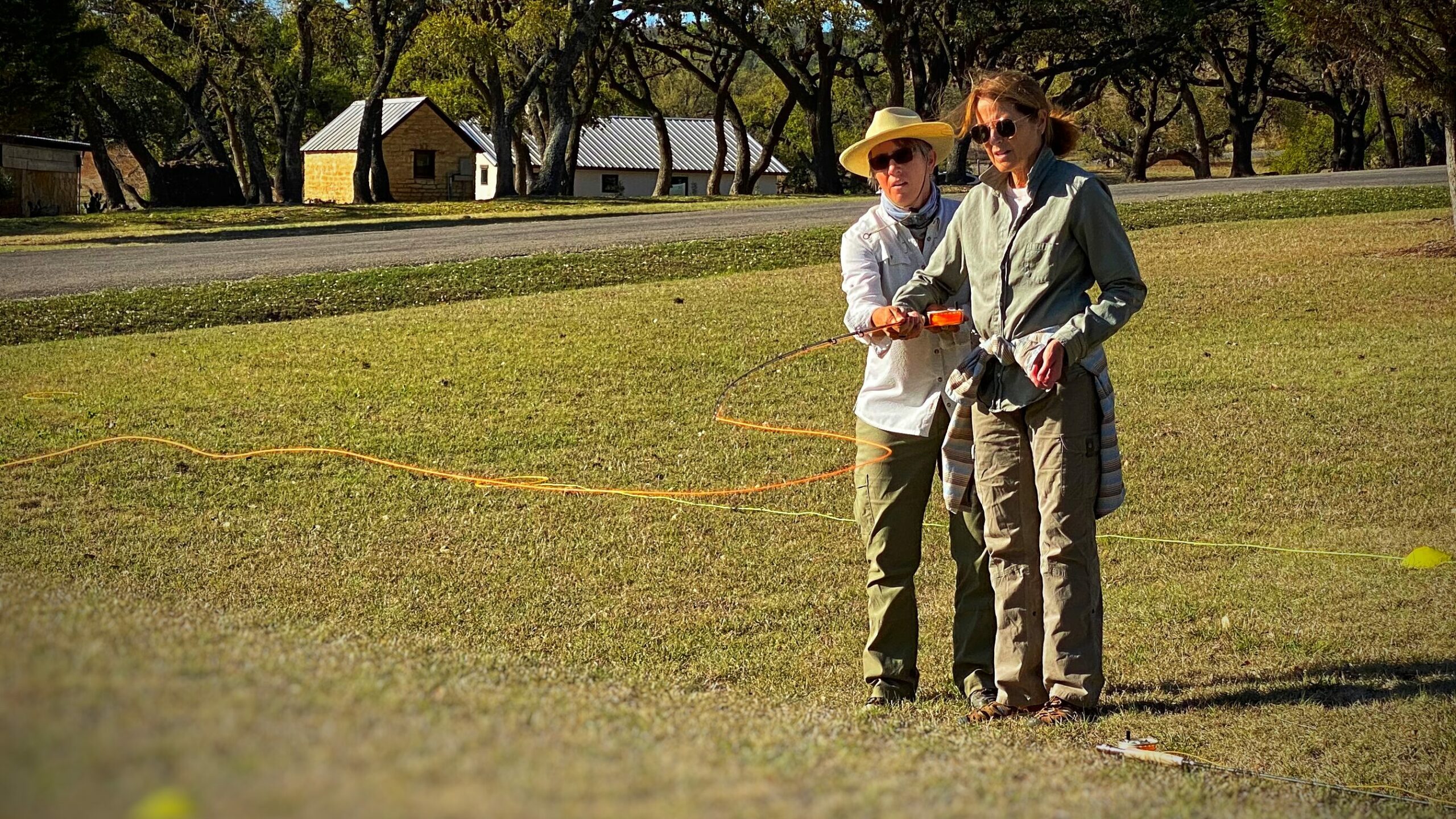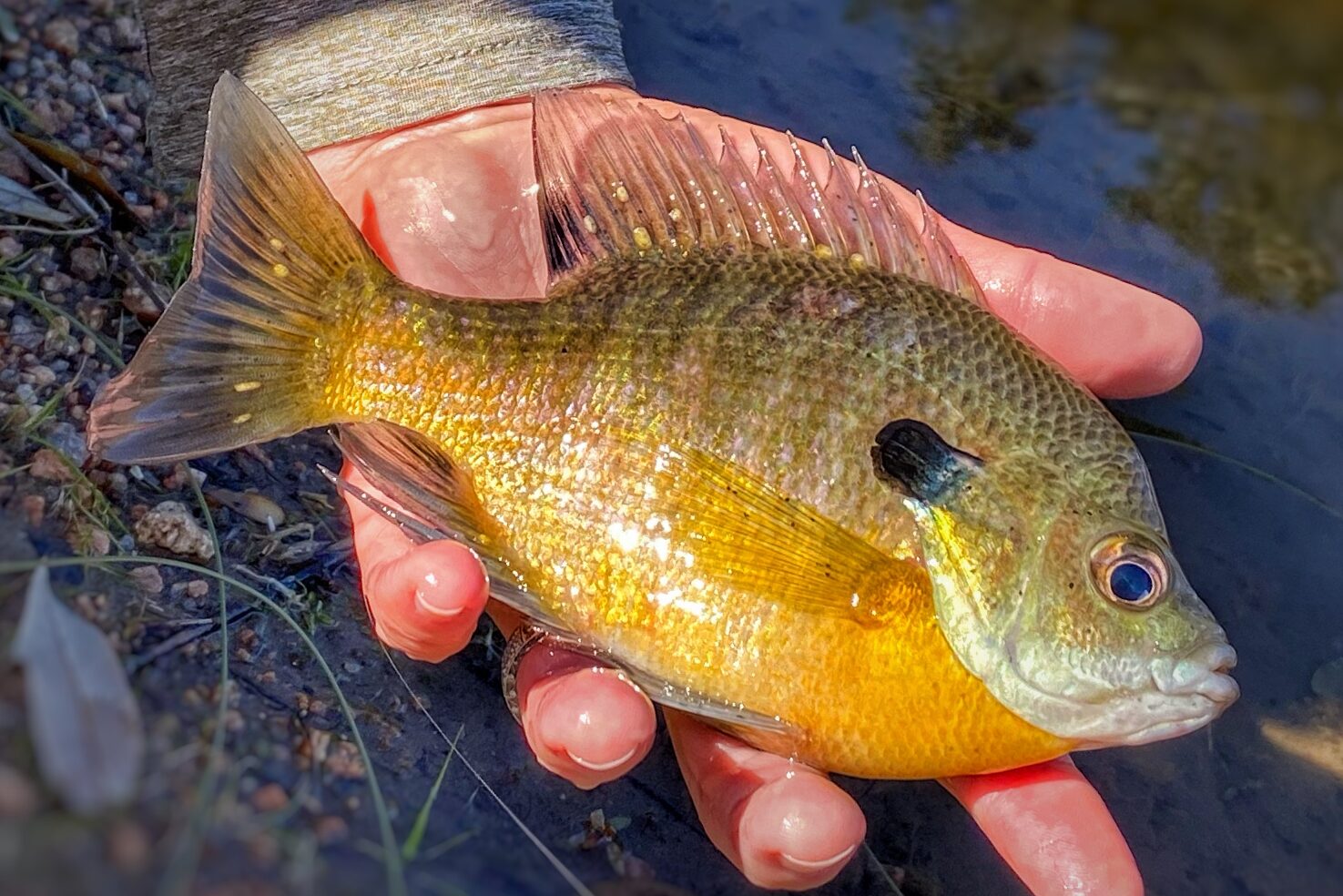Thanks again, Keith, for the challenge. Your question not only got me to thinking about tips and tricks I could offer, but also on the broader state (both content and accessibility) of fly fishing education in general. I have several thoughts on that as well as some ideas cooking to improve it, but for now, let’s stick with suggestions that might actually offer help now.
First, let’s touch on this idea of fishing pressure and “overfishing,” what it really means, and some ideas for how to manage it. At the heart of the matter is access. There’s plenty of water to fish, it’s just not always a cake walk to get to. The great state of Texas ranks 45th nationally in public land percentage for recreational use at a mere 4.2%. And when you combine the tendency of residents to hoard access to water in relatively arid climates like Central and West Texas with the tendency of some to defend it fiercely, the danger of trespassing isn’t just finding yourself at the mercy of the law, but facing the business end of a firearm wielded by the landowner.
I’ll cover this in depth later in the piece, but before we go down the rabbit hole of managing access, let’s talk about the elephant in the room. You. Well, not really you, but your skill level as a fly angler. I don’t know what that is, but I’ve worked with enough beginners who know they are beginner and enough beginners who think they are intermediate to have collected a bit of data. The reason a lot of folks aren’t catching fish is right there in the mirror. Even in high-pressure areas, a skilled angler can usually elicit a few strikes—including in popular spots on dismal days.
Professional & Self-guided Education
I get it, the path to systematically honing your skills can be its own conundrum. There’s A LOT of content out there about fly casting (which is important to fly fishers) and even more about equipment (which is important to equipment manufacturers). There are also lots of youtube videos about knots, special casts, and even some tips and tactics for reading water, targeting specific species and fishing certain situations. Additionally, many fly shops offer free “intro” or “101” classes/workshops for a couple of hours that are better than nothing, but barely scratch the surface. It seems to me that education about fundamental “fishing” skills presented in a cumulative way is lacking. It’s part of the reason I include an optional guide-ucation session as part of the beginner instruction package I offer. It includes time on the water for mentored fishing highlighting the skills that actually help you find and catch fish. Like reading water, learning how fish hold and feed, understanding how that changes with weather and water temperature, knowing how to properly hook, play and land fish on a fly rod, safe fish-handling skills, knowing when it’s time to move on, etc.

So my first bit of advice would be to do what you can to learn more about those things. Hit up a friend that is more experienced to fly fish with you. I still seek opportunities to fish with folks who are more advanced than I, in specific techniques and in general. Join one of the many statewide clubs that offer meetings, presentations and outings where you can meet other fly fishers and and grow your skills. Conferences and festivals like GRTU Troutfest, Octoberfisch, TX Fly Fishing & Brew Festival, Flies and Flame Expo, and many more also offer free demonstrations, classes, panels discussions and casting opportunities as well as being great places to meet fellow fly anglers. And while the internet isn’t the answer, there are tons of videos out there that can at least offer some guidance. Just search skills by keyword. Becoming a better angler won’t mean never getting skunked, but it will mean your odds of success increase greatly. Any day on any water.
But please hear me when I say that there is no substitute for solid, in-person instruction. For spending time with a patient and skilled teacher who can meet you where you are and help you set and achieve you angling goals. And that advice stands regardless of my vocation as a guide and instructor. I’m busy enough. For the sake of the fish, of other anglers, and most importantly, your own sake, consider it. Even an hour of instruction can mean a world of difference.
“Overfishing” and Water Access
Taking into account a solid skillset, let’s address “overfishing”. The concept of overfishing is a tough one to nail down, especially with warm water species. I suppose if large numbers are culled from a certain area and the fish population becomes undersized, this can be a problem. We’ve all seen it. Anglers who can’t wait to share pictographic proof of how they “limited out” every time they go fishing. This is part of the reason, along with climate change and habitat loss or compromise, that so many fisheries around the world are in real trouble. Unsafe fish handling is another contributor. A fish that “seems” healthy on release can die later as a result of unsound catch and release practices. That said, while areas that are easy to access see higher fishing pressure, many of the species we target here in Texas are still pretty willing—if you know WHAT to fish, WHERE to fish it, and HOW to fish it, depending on the location and the conditions. So again, it comes back to building those skills.
Another slightly smaller elephant here is access. As I mentioned before, the lack of it is one of the main contributors to fishing pressure. Limited access means that pressure isn’t spread out across the fishery but concentrated to create hot spots (or, in this case, cold spots) at points of easy access. In addition to local and state parks, Texas Parks and Wildlife (TPWD) is doing what it can to work around the limitations of private land ownership by making lease access arrangements with private landowners. I’m not going to post a link to that here as to avoid finger pointing from the “don’t share my fishing spot” crowd, but you don’t have to be an internet sleuth to find that info. These spots might take a little time, effort, and driving to get to, but if you want less-pressured access, they can be a good option.
As helpful and productive as these locations can be, they are still relatively few and far between. The good news? You already possess a couple of the best tools available to get you to better fishing. Your two feet. As tempting as it can be to step into the river and start fishing, remember that lots of people do that, and discipline yourself to wade up or down river a piece. Just remember, that land on either side of the river is very likely private, so it’s important to stay in the river. Keeping your feet wet is the best way to keep your nose clean. When fishing or guiding in Colorado in the summer months, I take this to the extreme and often hike in, sometimes miles, to fish areas with relatively low angling pressure. It’s totally worth it.

Another way to get better access is by float. If you have a canoe, kayak, paddle board, raft, or even float tube/kick boat, you can get to spots around busy lakes and ponds not easily reachable from the bank and float rivers. In addition to shuttling with a friend, there are several of the tubing & rental companies along rivers around the state that offer shuttle service for your own craft. Some rent kayaks as well. I’ve even rented a tube on rivers I want to wade fish to float the holes and lakes that are too deep to wade. During the summer months, I recommend keeping this to mornings (off the water by 10 or 11) in areas that are popular for tubing unless you want to play bumper boat while you try to fish. Not my idea of a good time. If a shuttle isn’t an option, many of the access areas are at dams and weirs so there is slack water that allows for paddling upstream with relative ease. Then you can fish your way back downriver. I’ve also fished up one side and back down the other. Is any of this as easy as pulling into a paved parking lot and walking a few steps to the bank? No, but if you really want to set yourself up to win, the extra effort usually pays off.
Equipment & Education
The thrust of the fly fishing industry’s focus is on tackle. The upside is that it has resulted in some amazing feats of design and engineering that give fly anglers unbelievable mechanical advantages. The downside is that it has contributed to a prevailing culture that centers on more/better equipment as the ticket to success while often ignoring the most important part of the equation. The angler.

“But what about the equipment,” you ask. Another valid question. Some will say that if you can’t afford a good rod and reel, spend your money on the rod and upgrade the reel later. And if you can’t afford either, the advice is to invest in a good fly line to make up for some of the limitations of a sub-par setup. I’ll be the first to admit that not all fly rods are created equal, and some of the higher end models offer advantages in feel, distance and accuracy due to more advanced materials and/or engineering and design. I’ll also add that many such advantages only begin to pay off in a noticeable way when in the hands of a proficient angler. But the latest, greatest, and often most expensive equipment is not a requirement to treat yourself to the zen of fly fishing. I’ve seen many seasoned casters and anglers over the years pick up vintage bamboo, old-school fiberglass, and even the least-expensive modern rods available today and make them perform. If you are struggling to cast beyond 20ft or your fly/leader/tippet is landing in a wad, a newer/better rod is not going to help. Neither is a heavier rod. I often demonstrate casting the same inexpensive 9ft 5wt I supply to students 60+ feet to help make this point.
Please, before you invest in a new combo as a beginner or make the mistake of thinking that better equipment will make you cast farther/better or land more fish, invest in yourself. Work to grow your skill set as an angler. And the investment doesn’t have to be financial. The investment of your time can often pay the biggest dividends. The downside to that method, on its own, is that you are looking at a trial and error scenario. And some folks don’t have the patience to endure the number of the trials or the errors it takes to achieve success on the self-taught route. A little hint, though, that can be where the mindfulness practice kicks in. But I digress. So, if you can afford it, spend $100 on a one-hour private lesson or on a group workshop with a skilled instructor. If that’s not in the budget, you’re still not out of options. Watch a couple of casting or skills videos and then go out and practice those things on the water. There truly is no better teacher than the river and the fish in it, and there is an undeniable correlation between rate of advancement and time spent with wet feet.

One last thought before I sign off. I’m sure some would argue that catching fish is sort of the point of fly fishing. But if you measure your success simply on a pass/fail, catch/don’t catch scale, or based on the size or number of fish landed, you are not only setting yourself up to feel like a failure some of the time (perhaps a good portion of the time when just getting started), you are missing out on much of the enjoyment that is part of the fly fishing journey.
I joined a couple of friends recently for a float to fish a well-paddled stretch of river. The fishing was great! The catching, to put it mildly, dismal. We ran across some other anglers who were fishing conventionally, with live bait to boot, and still having virtually no luck. Even on such a tough day, we were able to snag 5 small panfish between us. We agreed to deem that a triumph. But most importantly, the day was beautiful, the river lovely, and the company the very best. I relaxed as I paddled, practiced tucking my fly casts up under low-slung vegetation, mused on fly fishing, collected thoughts for this essay, and rested in the shade of the Bald Cypress alongside the wading Great Blue Heron and beneath the watchful eye of a cruising Caracara. Some days it’s okay, even advisable, to let the fishing be the excuse.

